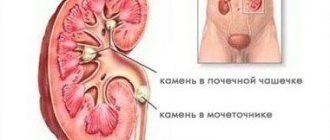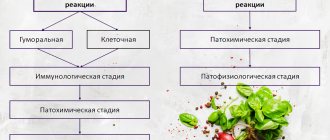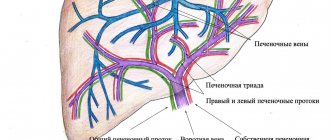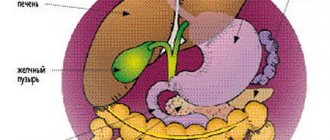Urologist
Belkin
Andrey Ivanovich
19 years of experience
Urologist of the first category, member of the European Association of Urology
Make an appointment
Urolithiasis (urolithiasis) refers to diseases of the urinary system. Its main feature is the deposition in the sections of this system of various compactions, which are called stones. Most often, the bladder and kidneys are susceptible to stone formation. The disease is dangerous not only because it affects internal organs and significantly reduces the standard of living. It is also fraught with a number of extremely undesirable complications.
It is difficult to say which group of people is more susceptible to this disease. The disease occurs in very young people of 20 years old, and in adults from 50 years old. It occurs more often in men, but in women the stones are larger, so the disease is more complicated. People who live in cities are more likely to get sick, which is related to the environment and water quality.
The disease can be chronic, with periodic relapses, or it can manifest itself only once and, after the patient recovers, never return.
Symptoms
The first signs of urolithiasis include sensations of colic or dull pain in the kidney area, as well as the bladder. Frequent urination should also alert you. When the disease progresses to a serious level, other symptoms appear:
- renal colic - sharp pain. It is very difficult to endure such pain; it is difficult for patients to tolerate;
- nausea and vomiting due to attacks of pain;
- painful sensations during urination;
- lack of urination. This is the case if the stone blocks the urinary system;
- blood particles in the urine. This symptom does not occur in only 8% of patients;
- increased weakness, fatigue;
- chills;
- temperature increase.
If symptoms of urolithiasis are detected, do not treat yourself under any circumstances, do not try to wait out the pain - immediately call an ambulance.
Are you experiencing symptoms of urolithiasis?
Only a doctor can accurately diagnose the disease. Don't delay your consultation - call
Classification of stones
The classification can be based on the shape, location, chemical composition and size of the stones. Stones formed in the urinary system can have the following forms:
- round;
- oblong;
- flat;
- combined (from different configurations);
- coral-shaped.
If the systematization is based on the chemical composition inherent in stones, then the following types can be distinguished:
- protein;
- from inorganic compounds (we are talking about carbonates, phosphates, oxalates);
- magnesium;
- from derivatives of uric acid;
- polymineral.
The size range of stones can range from one millimeter to ten-centimeter “giants”; the weight of some specimens reaches a kilogram or more. Doctors performing operations to extract substances have to deal with stones of various appearances.
| Stone type | Color | Surface |
| Uric acid (urate) | Yellow-brown | Smooth |
| Oxalate | Brown-black | Uneven, with thorns |
| Phosphate | Whitish gray | With pores |
If we consider stones according to their location, then doctors identify substances that have settled in the renal pelvis, in the bladder area, in the ureter, in the kidneys.
Complications
Urolithiasis, if the patient is not treated in time, can lead to more serious consequences:
- penetration, development and spread of infections in the urinary tract;
- pyelonephritis and other kidney diseases;
- nephrosclerosis. These are transformations of kidney tissue that are associated with degenerative processes;
- problems with the intestines - in particular, paresis;
- accumulation of purulent formations;
- renal failure and bacterial shock.
If the stone is not removed, then as the disease develops the kidney may even die - this is extremely dangerous and risky, so the disease requires effective and thorough treatment.
Pathogenesis
The insidiousness of urolithiasis lies in the fact that for a long time a person does not notice any signs indicating the presence of stones.
The situation begins to worsen the moment the stone begins to move, interfering with the normal process of urine outflow. A severe pain syndrome appears - the so-called “renal colic”.
Urinary infection aggravates urolithiasis, being one of the factors stimulating the development and relapse of this disease. This is explained by the fact that the infection affects the composition of urine, leading to the formation of crystals and stones.
Causes
There are many causes of urolithiasis, the main ones are as follows:
- drinking water with plenty of minerals. It is also called hard water. Water supersaturated with calcium salts most strongly contributes to the development of the disease;
- a menu rich in high-protein foods, as well as too sour and spicy dishes;
- deficiencies of individual vitamins - most often belonging to group B and vitamin A;
- physical inactivity – that is, an insufficiently active lifestyle also contributes to urolithiasis;
- some bad habits. Thus, the development of stones is promoted by excessive alcohol consumption;
- taking certain medications not according to instructions, in excessive quantities;
- structural features of the urinary system. We are talking about anomalies such as a narrowed lumen of the urinary tract;
- various inflammations, including urethritis, cystitis, etc.;
- metabolic disorders;
- severe and regular dehydration;
- increased acidity of the body itself.
Many of these causes of urolithiasis can act in combination, in a complex manner - it all depends on the situation.
Genesis of formal type
The basis of the stone is its matrix, which has a protein structure. The matrix is formed as a result of metabolic disorders, infection of the body, various inflammatory diseases, and atypical blood circulation in the kidneys. Insoluble compounds (calculi) are deposited in the components of the urinary system, which accumulate and increase over time. The kidneys and other organs that remove urine from the body are in conditions of insufficient blood flow, which reduces their nutrition and leads to malfunctions.
Diagnostics
As in many other cases, the diagnosis of urolithiasis begins with collecting an anamnesis and analyzing the patient’s complaints. Already based on the information that the patient feels severe pain and has problems with urination, certain conclusions can be drawn.
The following are assigned:
- general blood analysis;
- general urinalysis and biochemistry;
- CT;
- Ultrasound of the urinary and kidneys.
When making a diagnosis, it is important to exclude other diseases that have similar symptoms, for example, acute cholecystitis or appendicitis.
Signs of urolithiasis
Manifestations of urolithiasis may resemble symptoms of other diseases of the abdominal cavity and retroperitoneal space. That is why a urologist first of all needs to exclude such manifestations of an acute abdomen as acute appendicitis, uterine and ectopic pregnancy, cholelithiasis, peptic ulcer, etc., which sometimes needs to be done together with doctors of other specialties. Based on this, determining the diagnosis of ICD can be difficult and lengthy, and includes the following procedures:
1. Examination by a urologist, obtaining a detailed medical history in order to maximize the understanding of the etiopathogenesis of the disease and correct metabolic and other disorders for the prevention of the disease and metaphylaxis of relapses. The important points of this stage are to clarify:
- type of activity;
- time of onset and nature of the course of urolithiasis;
- previous treatment;
- family history;
- nutrition style;
- a history of Crohn's disease, bowel surgery or metabolic disorders;
- drug history;
- presence of sarcoidosis;
- the presence and nature of the course of urinary infection;
- the presence of anomalies of the genitourinary organs and operations on the urinary tract;
- a history of trauma and immobilization.
2. Visualization of the stone:
- Ultrasound of the kidneys, upper and lower urinary tract;
- performing survey and excretory urography or spiral computed tomography.
3. Clinical analysis of blood, urine, urine pH. Biochemical examination of blood and urine.
4. Culture of urine for microflora and determination of its sensitivity to antibiotics.
5. If necessary, stress tests with calcium (differential diagnosis of hypercalciuria) and ammonium chloride (diagnosis of renal tubular acidosis), and parathyroid hormone testing are performed.
6. Analysis of the stone (if any).
7. Biochemical and radioisotope studies of kidney function.
8. Retrograde ureteropyelography, ureteropyeloscopy, pneumopyelography.
9. Study of stones by tomographic density (used to predict the effectiveness of lithotripsy and prevent possible complications).
Treatment
The treatment regimen for urolithiasis is influenced by the parameters of the cystolithiasis stone: composition, location, and impact on the general condition of the patient. The characteristics of the course of the disease are also taken into account. The main task in the treatment of cystolithiasis is to remove stones from the urinary system. They are either dissolved or removed through surgery.
Thus, treatment of urolithiasis comes down to several points:
- taking certain medications;
- physiotherapy;
- diet;
- operation.
To restore the patient’s quality of life, pain is relieved and antispasmodics are prescribed. In some cases, very strong painkillers are required.
The process of dissolving stones is not fast, some methods do not give results immediately - the program is selected according to the situation and is constantly monitored by doctors.
Diet for urolithiasis is important: high-quality drinking regimen, limiting fatty, spicy, spices, coffee, tea, chocolate. Legumes, citrus fruits, dairy products and many other types of food are also not recommended - each patient is given a detailed reminder.
As for surgical intervention, the types of operations are also different - there are more than five techniques that are selected based on the patient’s condition and the characteristics of the stone(s).
Various herbal mixtures are used as folk remedies. But under no circumstances should you drink them on your own, without consulting a doctor - first get the doctor’s permission.
General information
The peculiarity of urolithiasis is that it often occurs without any symptoms. This is its danger, because vivid symptoms appear already at the stage of disease progression.
KSD can develop at any age, but the disease is more common in patients between 20 and 55 years old. In this case, men are most often affected, but in women the course of urolithiasis is more acute, which leads to a number of complications (the formation of stones that occupy the entire cavity of the kidney).
Urolithiasis leads to the formation of stones in various parts of the urinary tract. In elderly patients and children, they most often form in the bladder, in middle-aged people - in the ureters or kidneys. The size of the stones, as well as their number, can vary - from 1 mm to large stones whose weight exceeds 500-600 grams.
Prevention
Measures to prevent urolithiasis are the following:
- Consult a doctor if colic occurs even very rarely and does not particularly bother you. It is better to study the problem at the very beginning and prescribe effective treatment;
- undergo routine examinations if you have already had any urological diseases;
- eat healthy foods, reducing the amount of spicy, salty, fatty foods;
- eliminate or minimize alcohol consumption as much as possible;
- drink the daily amount of water, do not violate the drinking regime. The water must be of high quality, purified through a filter;
- move every day, devote time to physical activity.
These simple recommendations for the prevention of urolithiasis will help significantly reduce your risks.
Diet
Diet is the basis of treatment not only for urolithiasis, but also for other diseases. Here are some basic principles:
- Diet variety (while the total amount of food consumed is reduced).
- Exclusion from the diet of foods that contain large amounts of stone-forming substances.
- Drink plenty of fluids (2-2.5 liters per day).
Regarding foods that need to be excluded from the diet, it all depends on the chemical composition of the stones. Naturally, alcohol, fatty and spicy foods will have to be excluded in any case, but there are foods whose intake will also have to be limited.
For example, with phosphorus-calcium stones, milk, alkaline mineral waters, and spices are excluded. It is better to limit the consumption of potatoes, cheese, legumes and green vegetables.
Surgery
When choosing surgical treatment, preference should be given to the least traumatic methods. There are two types of operations - endoscopic and laparoscopic. The essence of endoscopic surgery is to crush stones using medical instruments. Most often used:
- Cystolithotripsy. It is carried out for stones localized in the bladder. First, the stone is crushed, and then it is removed.
- Ureterolithotripsy. Used for stones in the ureter. To carry it out, a ureteroscope is used.
- Flexible retrograde nephrolithotripsy. Used to remove kidney stones (diameter at least 2 cm).
Laparoscopy is a modern surgical treatment method that involves performing surgery through small holes.
Urolithiasis is a serious pathological condition, so treatment is carried out immediately after the first symptoms are identified. It should be borne in mind that relapse is possible even after surgery. Therefore, long-term observation by a urologist is required, as well as following his recommendations.
Prevention involves changing your diet, excluding “junk” foods (fast food, processed foods), engaging in some kind of active hobby (especially during sedentary work), and drinking enough water per day.







